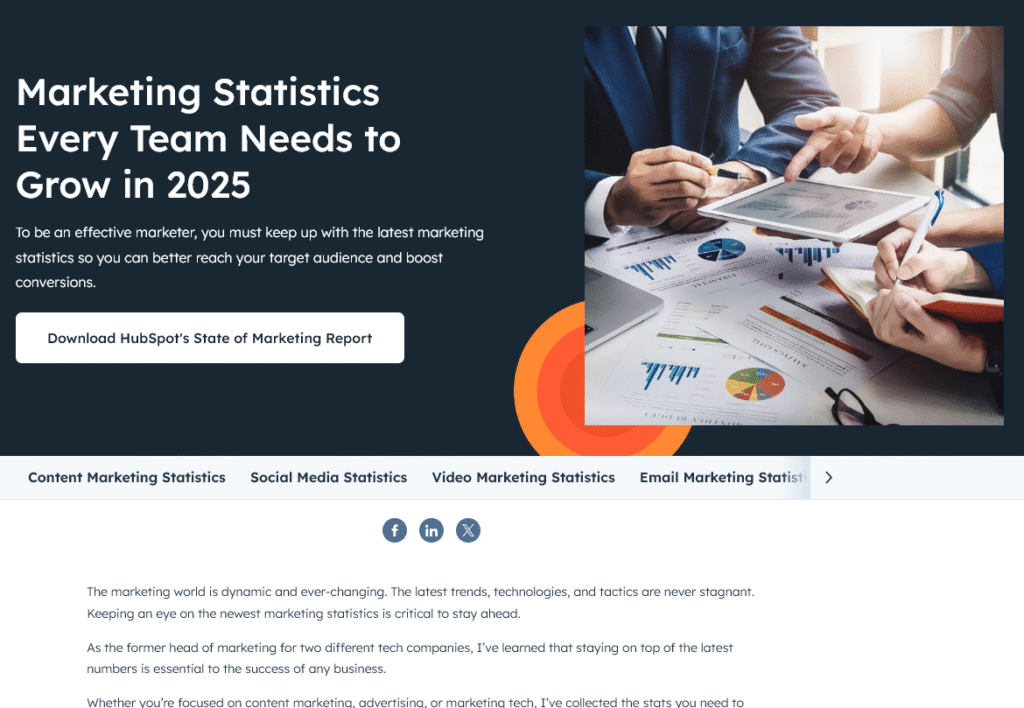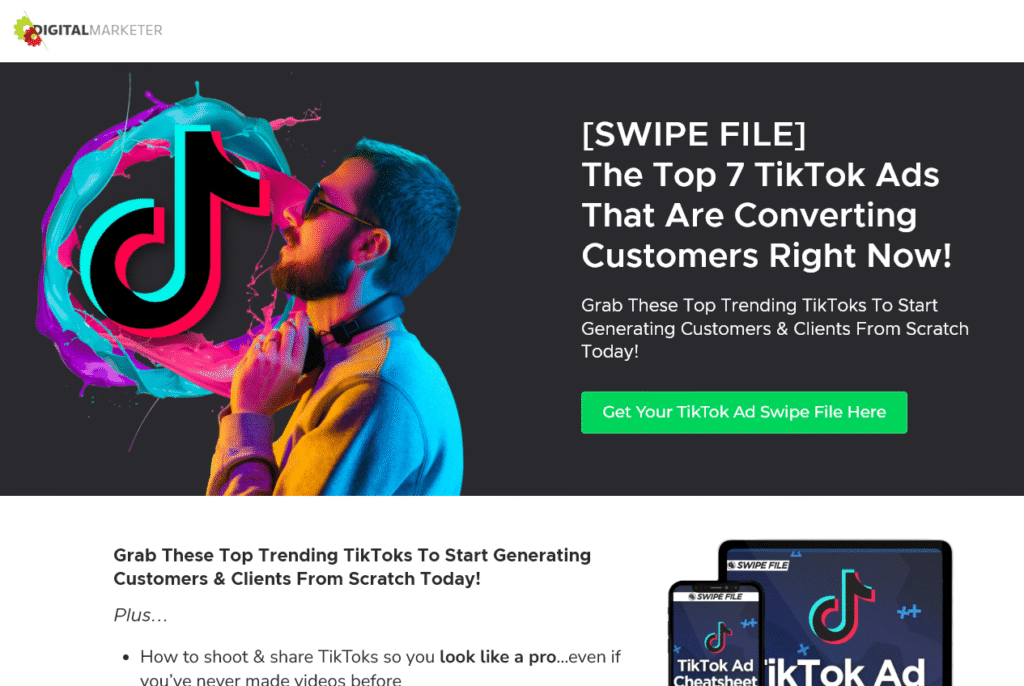
So you’re building your first lead magnet (or your second, or third). Maybe the last one brought in a decent list of names, maybe it flopped, or maybe sales came back with the dreaded line: “These leads don’t look like our target lead.”
Either way, you’re back at the same spot: searching for something that will pull in not just any leads, but the right ones. The kind that are qualified, engaged, and actually worth the follow-up. The good news is we’re here to share with you tested formats that consistently pull in high-quality B2B leads.
Key Takeaways
- Lead magnets are still one of the most effective ways to capture and qualify B2B leads when they’re built for a specific ICP problem.
- Classic formats like eBooks, checklists, and reports still work; what matters is execution and focus, not novelty.
- Interactive tools (quizzes, ROI calculators, audits) provide personalization and deeper engagement that static PDFs can’t match.
- Benchmark reports, playbooks, templates, and toolkits consistently deliver value because they solve real problems with credible data or actionable steps.
- The best lead magnet depends on the buyer’s stage: quick wins for top-of-funnel, depth and authority for middle, and reassurance through proof at the bottom.
Are eBooks and checklists still effective?
Yes, they are. In fact, eBooks remain one of the most popular types of B2B content, with 75% of marketers using them as lead magnets. The idea that formats like eBooks and checklists are “don’t pull weight anymore” is more myth than reality.
So why do they get such a bad reputation?
The decline isn’t in the format itself. It’s in how they are usually executed. When they’re generic, they underperform. When they’re built with focus, they still deliver.
Think of the difference:
- A generic “Top 10 Marketing Tips” eBook is a surface-level download.
- A tightly written “15-Point Technical SEO Audit Checklist for E-Commerce Teams” is a precision tool that attracts exactly the right people.
Playbooks, reports, and even simple checklists can be one of your best lead magnets when they’re scoped for a very specific ICP problem.
11 Proven Lead Magnet Ideas to Capture High-Quality B2B Leads [2025]
If you’re ready to go beyond the familiar and test formats that have captured attention this 2025, here are 11 proven lead magnet examples worth trying. Some of them take the shape of “classic” formats, but all of them are designed to resonate with today’s B2B buyer.
1. Quizzes & assessments
Imagine landing on a site and instead of being handed another PDF, you’re invited to take a quick quiz about yourself. Instantly, the spotlight shifts from the vendor to you.
That’s exactly what Kylie Kelly, a visibility coach & audience growth expert, built into her site. The first thing you see when you arrive isn’t a sales pitch, but her quiz.

As Kylie shared on her blog:
“In the first 30 days, my new quiz brought in 135 leads with a jaw-dropping 86% conversion rate.”
So why does this work so well?
On her homepage, one of the first things you see is the call-to-action: “Take the 2-Minute Quiz & grow your business your way.” The promise is quick, specific, and centered on the lead.
Quizzes work because they flip the dynamic. They put the spotlight on the lead — their challenges, their scores, their category. They walk away with results that feel earned and personalized.
And while the lead walks away with something that feels tailored, you collect rich qualification data that tells you more about them than any static PDF ever could.
2. Free audits or consultations
Few things impress more than tailored advice. Pixalrity shared a case study of a B2B SaaS company that swapped generic sales pitches for free consultations. And within six months, the company saw a 40% increase in booked sales meetings and a 25% lift in revenue.
Free consultations work because they create momentum. The power lies in two things: first, it demonstrates your expertise in real time. Second, it naturally filters out the casual browsers.
Nobody books an audit unless they’re genuinely considering change. And when they do, you’ve already proven you can deliver value before a contract is even signed.
3. Interactive ROI calculators
When it comes to B2B buying, cost justification is always on the table. That’s why ROI calculators convert so well.
They turn abstract benefits into hard numbers that leads can take straight to their CFO. Salesforce does this well with tools like their CRM Benefit Calculator and Sales ROI Calculator.
And here’s the clever part: because the inputs come from the lead (their headcount, their costs, their revenue), the output feels personal and credible. They built the case themselves — you just made it possible.
4. Original industry benchmark reports
Every decision-maker wants to know: “Where do we stand compared to others like us?” That’s why benchmark reports are still one of the best lead magnets in B2B.
If you’ve ever searched for something like “B2B marketing stats 2025”, you’ll find endless posts written about it. HubSpot stands out because its strategy combined organic reach with lead capture.
They’ve published a high-ranking overview page with some key insights, then offer a more comprehensive benchmark report as a gated download. The ungated content drives discovery, while the gated report captures the leads.

Benchmark reports work because they hit two needs at once: executives need credible numbers to guide decisions, and marketers need trusted sources to reference. If you can surface data others don’t have and package it like HubSpot does, you’ll have a lead magnet that consistently attracts high-quality signups.
5. Micro-courses
In B2B, video is already a proven driver of engagement: 83% of marketers use video for lead generation. A micro-course takes that a step further. Instead of a single video or PDF, you’re offering a short learning path with a clear outcome.
The best part is you don’t always need to create something from scratch.
An old lead magnet can be repurposed into a mini-course, broken down into digestible modules. Or, if you already have a flagship course, a free micro-course can serve as a way for leads to test-drive your teaching before committing.
Because participants have to invest hours, not just minutes, the people who finish this are more engaged and more likely to see you as a trusted source.
6. Expert-led masterclasses
If micro-courses are the steady, bite-sized path to learning, then live masterclasses are the main stage.
Because they require a bigger time commitment, only serious leads show up. And that’s a good thing. It means you’re talking to people who are already invested in solving the problem you address.
And even if you later repurpose the session into an on-demand replay, it still carries the weight of exclusivity: this was valuable enough to attend live.
7. Swipe files & example libraries
Think back to when you were staring at a blank page trying to write an outreach email, a sales deck, or an ad campaign. Wouldn’t it have been easier if you had proven examples to draw from?
That’s exactly why swipe files work.
A clear example of this comes from DigitalMarketer, which published a free swipe file of top-performing TikTok ads.

For anyone trying to figure out TikTok ads, this is a shortcut to what’s working today. It doesn’t promise theory or predictions. It offers ready-to-use examples, paired with practical context.
And that’s exactly what makes swipe files one of the easiest yeses in lead generation.
8. Strategy playbooks
A guide gives them the theory. A playbook gives them action. It breaks a big, intimidating challenge into concrete steps that your leads can actually follow.
That clarity is the hook. Buyers facing complex, high-stakes problems don’t want generalities — they want a proven path. A strong playbook feels like you’ve handed them the insider manual that makes success achievable.
9. Ready-to-use templates & frameworks
When deadlines loom, no one wants to reinvent the wheel. Templates work because they give leads something plug-and-play. It’s immediate, practical, and saves them hours of work.
Copy Posse, for example, offers proven fill-in-the-blank hooks that any business owner can use for their social captions.

It’s a simple, free resource that promises instant value — leads hand over an email and get a tool they can apply the very same day.
The more niche the template, the more valuable it feels. That’s why many founders and marketers share the same frameworks they rely on themselves.
10. Free trials or freemium access
Sometimes the best way to sell is to let your product do the talking. Trials and freemium tiers work because they remove risk. Instead of taking your word for it, leads get to experience value for themselves.
And once they’ve put in the time to set things up, familiarity kicks in. People naturally prefer the tools they’ve invested effort in, which makes conversion much more likely.
11. Comprehensive toolkits & resource bundles
One resource is useful. A full bundle feels like a solution. Toolkits combine multiple asset types — a checklist, a template, a guide — into a single package. That completeness increases the perceived value dramatically.
For your leads, it signals that you’ve thought through the challenge from every angle. You’re not just handing them one piece of the puzzle. You’re giving them the whole set, positioning yourself as a partner rather than a vendor.
Choosing the best lead magnet for your ICP
The trick isn’t just picking a shiny new format. It’s matching the right idea to the right stage of the buyer journey.
- Top of funnel This is where leads are just starting to name their problem. They’re curious, not yet committed, and they won’t give you thirty minutes of their day, but they will give you thirty seconds. That’s why quizzes, templates, and benchmark reports work so well here. They’re easy to access, quick to consume, and instantly useful. The goal is to spark awareness and earn a first handshake, not to overwhelm with detail.
- Middle of funnel At this stage, buyers know what their problem is. They’re comparing approaches, weighing options, and asking, “Who really gets this?” This is where you need to show depth. Playbooks, workshops, toolkits, and swipe files position you as the authority — not just talking about the problem, but handing over resources that help them start solving it. These formats signal expertise, build trust, and keep you top-of-mind as they move closer to a decision.
- Bottom of funnel Here’s where the stakes are highest. Leads are close to making a choice, but they need reassurance: is this worth the money, the risk, the internal buy-in? Lead magnets like ROI calculators, audits, and free trials cut through the uncertainty. They quantify value, reduce risk, and give decision-makers something concrete to take to their boss or procurement team. At this point, you’re not just educating — you’re helping them justify the purchase.
Don’t fall into the trap of novelty for novelty’s sake. The strongest lead magnets feel like they were created for one person, at one moment, solving the problem that’s front and center for them.
The value that makes them say “worth it”
The 11 lead magnet ideas here are your tools to qualify leads more effectively, nurture longer sales cycles, and stand out in a crowded market.
Lead magnets were never about the format. Whether it’s a PDF, a course, or a calculator, the question is always the same: Does this deliver value sharp enough to make someone think, “I can’t believe this is free”?
Because when you get it right, you’re not just filling the funnel with names. You’re starting conversations with the people who actually belong in your pipeline.
